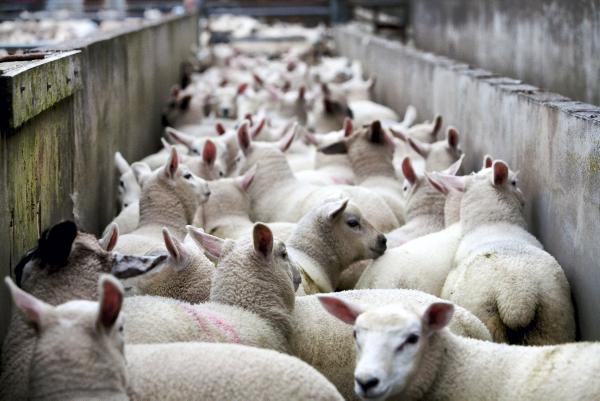Daily temperatures have dropped again in the last week. However, in the coming weeks, blowfly will become a real problem as they become most active from May through to autumn.
The main factors to consider when choosing the product to cope with blowfly is the length of prevention offered and how rain-fast the product is.
There are a number of factors that may increase the risk of a blowfly attack. As temperatures start to rise in mid- to late-May, fly activity increases, which can bring about the onset of fly strike.
Although shearing will protect ewes to some extent by removing wool cover and dirty wool on the rear, skin damage caused by shearing may attract flies to the area and give grounds for an initial strike.
Sheep should be checked daily during periods of high risk to ensure that, if flystrike has occurred, it is detected and treated quickly. Some obvious signs of flystrike are agitated sheep that walk quickly with tail swishing and/or nibbling at the affected area. The presence of maggots will generally only be detected by closer examination.
Prevention
Prevention is always better than the cure. Table 1 shows a list of products on the market for the control and treatment of fly strike, scab and ticks.
Cost should not be looked at solely when selecting a product – farmers should weigh up period of cover and application type also when selecting the right product for use on the farm.
One of the important factors to look at is the animal to be treated and the withdrawal period.
Pour-ons
Farmers most commonly use pour-ons as preventatives because of their ease and speed of administration. CLiK, CLiKZiN and Vetrazin are the most common products used for preventing blowfly strikes.
CLiK has a long withdrawal period of 40 days. CLiKZiN is a more recent product and comes with a much shorter withholding period of seven days.
CLiKZin and Vetrazin have control periods of eight weeks and eight to 10 weeks, respectively.
CLiK has a much longer control period of up to 16 weeks, but this comes with a longer withdrawal period.
Because of this, CLiK may not be preferred for use on lambs from early lambing flocks that will have a shorter period of slaughter. Farmers more commonly use CLiK on younger or lighter lambs where the 40-day withdrawal period will not be an issue.
Youngs Vector is another pour-on product available on the market. However, this has a wider range of parasitic control. It is active against ticks, head flies and biting lice. It can also be used to both prevent and treat fly-strike.
It has a control period for the prevention of fly strikes of up to eight weeks and comes with a withdrawal period of seven days, which is similar to CLiKZiN.
Dipping
Pour-ons are mostly targeted at fly strike prevention. Dips give the added benefit of having a broader spectrum of control, with products offering cover against ticks, scab, lice and keds.
However, where farmers are considering dipping, they should be aware that the control period with dipping products is generally shorter than pour-ons.
There are several methods of dipping available – plunge dipping, shower and spray units.
It is essential when mixing the dip solution to do so to the correct concentration as specified on each product and have extra on hand to allow for losses. It is also essential that dips are disposed of in the correct fashion as specified on the packaging.






 This is a subscriber-only article
This is a subscriber-only article









SHARING OPTIONS: